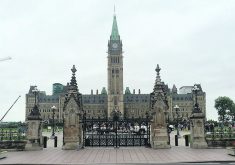Practice intended to prevent extreme price changes, but study finds it causes liquidity to fall in futures, options markets
Futures markets protect price discovery and liquidity by imposing price limit controls, right?
Nope, says a new analysis by Xinyue He and Teresa Serra of the University of Illinois published by the American Journal of Agricultural Economics Feb. 21.
“We find that price limits neither reduce volatility nor improve liquidity,” they wrote.
Instead, they add to the high uncertainty that precedes the limit move, leading to significantly higher volatility and lower liquidity when trading resumes.
“Further, contrary to the notion that trading migrates to the limit-free options market, options volume drops and liquidity drains during limit moves.”
Read Also

USDA’s August corn yield estimates are bearish
The yield estimates for wheat and soybeans were neutral to bullish, but these were largely a sideshow when compared with corn.
The analysis is based upon hog and cattle futures markets rather than the bigger crop futures markets because of the high incidence of limit days in those livestock markets. For Chicago lean hogs futures, limit days have affected about nine percent of trading days.
These conclusions agree with previous research into the price discovery confusion that occurs when certain markets are temporarily locked and trading can’t occur. However, it adds new depth by using intraday market action rather than just end-of-day prices.
As well, it does not support previous research that found trade migrates to the options market when futures are shut down. Options trade also narrows when futures trading is stopped.
The authors recommend futures market operators consider various measures to reduce the problem with price limits:
- Allowing larger moves on the days of important data releases, such as U.S. Department of Agriculture reports.
- Making limits more discretionary, based on a number of factors rather than merely the price move.
- Finding a way for price bids to be registered even during non-trading limit periods so the markets have a sense of where prices are.
- Co-ordinating rules between futures and options markets.
Price limits are a longstanding mechanism in futures markets, designed to stop prices from suddenly going too far and allowing the information that sparked the price move to spread out to more market participants. The theory has been that this will allow for better, more informed trading to occur once the limit orders are removed.
However, Xinyue and Serra find that limits tend to cause liquidity to fall in both the futures market and the options market. People hold back from futures when they don’t know where prices are trending, and options traders are leery of taking positions while the futures markets are closed because they can’t delta hedge their positions.
“Overall, the findings suggest that rather than allowing the markets to cool off, price limits adversely affect market quality in presence of large price moves,” says the analysis.
“Our results contradict the notion that price limits provide a ‘cooling-off’ period during which market uncertainty on the equilibrium price level can be resolved. Instead, the evidence is consistent with limit moves exacerbating the volatility in a market that is already turbulent.”


















